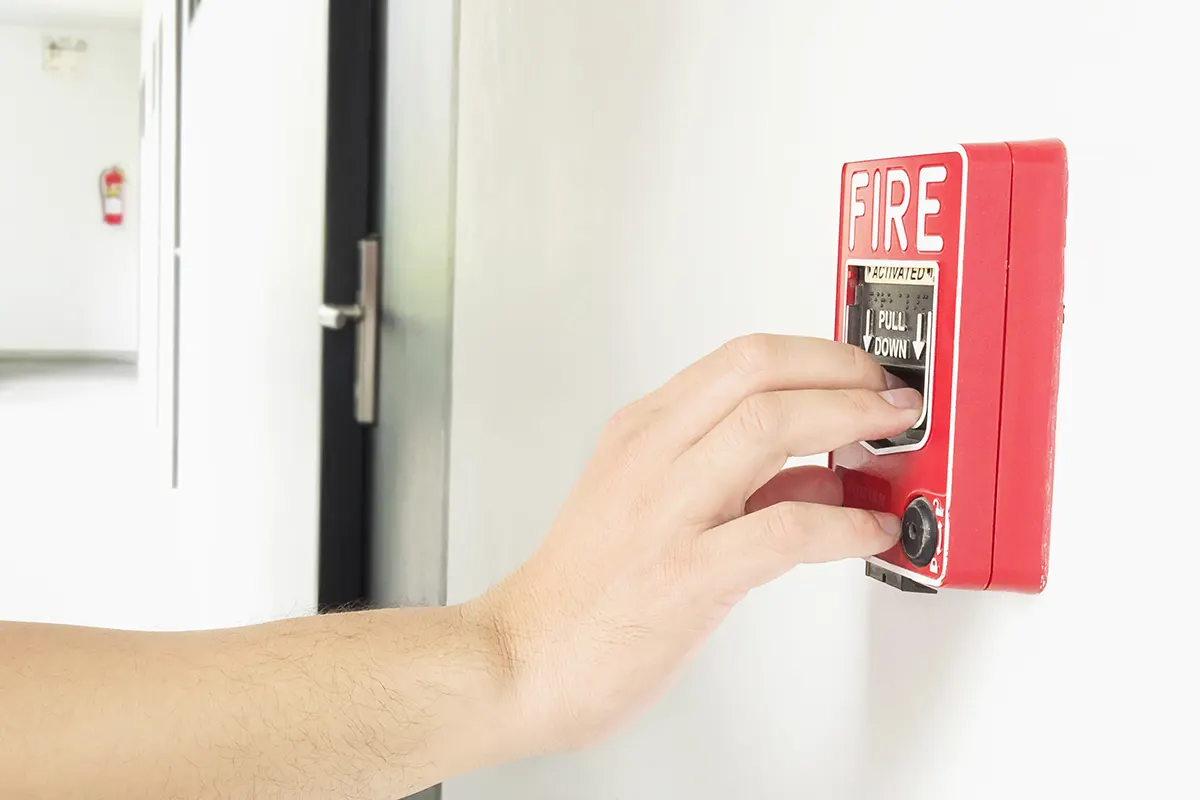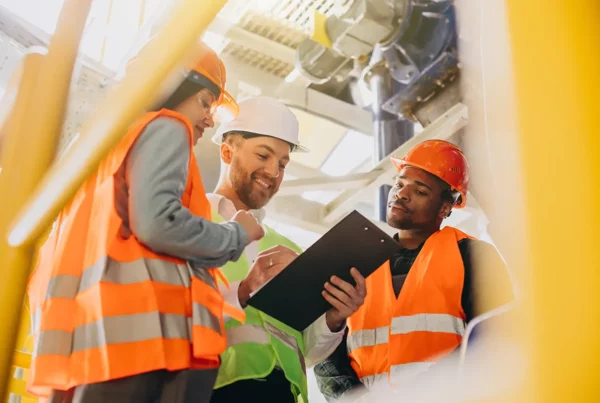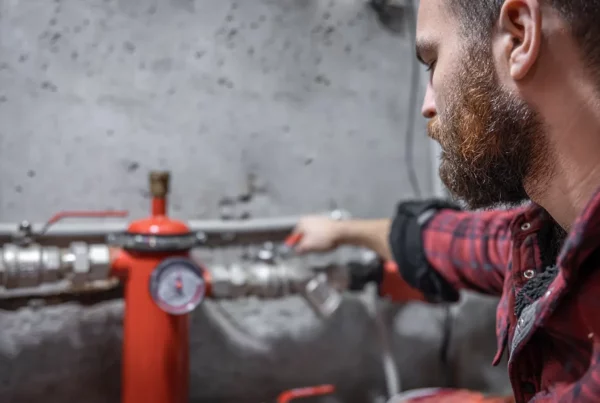
When it comes to commercial fire systems, there are a number of different types available, depending on the size and scope of the building or complex. As an electrician, it’s important to understand the different types of systems and their benefits, so that you can make the best recommendation to your clients.
Dry Pipe Sprinkler Systems
Dry pipe sprinkler systems are one of the most common types of fire systems found in commercial buildings, and they work by filling pipes with pressurized air or nitrogen and connecting them to sprinkler heads, which are triggered by heat or smoke. When the sprinkler head is activated, the pressurized air is released, allowing water to flow through the pipes and onto the fire. Dry pipe sprinkler systems are ideal for buildings located in areas where the temperature drops below 40°F, as the pressurized air helps to ensure that the water is not frozen in the pipes.
Dry pipe sprinkler systems are easy to install and have a low maintenance cost, which makes them an attractive option for many commercial buildings. In addition, they are able to respond quickly to a fire, which is essential for keeping the damage to a minimum. They can also be used in areas with high ceilings, as they allow the water to reach the fire quickly.
However, dry pipe sprinkler systems do have some drawbacks. Because they rely on pressurized air or nitrogen, they require a compressor to maintain the pressure in the pipes. This can be expensive to install and maintain, and can also make the system more prone to failure. In addition, the water pressure in dry pipe systems can be lower than other types of systems, so they may not be able to extinguish larger fires.
Pre-Action Sprinkler Systems
Pre-Action Sprinkler Systems are a type of fire system that is often used in commercial buildings. This type of system is designed to provide a higher level of protection than a standard dry pipe sprinkler system, as it includes an additional control valve. The control valve is closed until the fire alarm is triggered, allowing the water to flow through the pipes and onto the fire.
Pre-Action Sprinkler Systems are often used in buildings where the risk of accidental water damage is high. This is especially true in data centers and other sensitive areas, as the additional control valve helps to prevent water damage even in the event of a false alarm. This type of system is also great for areas where regular maintenance is necessary, as the control valve makes it easy to perform the necessary maintenance without releasing the water.
Pre-Action Sprinkler Systems are also beneficial in areas where the temperature is prone to dropping below 40°F. This is because the system is designed to prevent the pipes from freezing, which can be a major issue in colder climates where temperatures can drop significantly. In addition to preventing the pipes from freezing, pre-action systems also provide a higher level of detection than standard dry pipe systems. This is because the control valve is triggered by the fire alarm, which is much more accurate than the heat or smoke detectors used in dry pipe systems.
As an electrician, it’s important to understand the benefits of Pre-Action Sprinkler Systems and be able to recommend them to clients when necessary. This type of system is a great choice for areas where the risk of accidental water damage is high, such as data centers and other sensitive areas. It’s also ideal for areas where temperatures can drop below 40°F, as the system is designed to prevent the pipes from freezing. Finally, pre-action systems provide a higher level of detection than standard dry pipe systems, which can help save lives in the event of a fire.
Deluge Sprinkler Systems
Deluge sprinkler systems are one of the most effective and efficient fire suppression systems available for commercial buildings. They are used in areas where a quick response time is essential, such as aircraft hangars, and other large areas. Deluge sprinkler systems are designed to rapidly release a large amount of water to quickly extinguish a fire.
In a deluge system, all of the sprinkler heads are open and connected to a water supply. When the fire alarm is triggered, the water is released simultaneously through all of the heads, quickly extinguishing the fire. This type of system is beneficial because it allows for a rapid response to a fire, without the risk of the fire spreading. Deluge sprinkler systems are typically used in areas where a fast response time is essential, such as in aircraft hangars, storage facilities, and other large areas.
Deluge sprinkler systems must be properly designed and installed in order to be effective. They require a large water supply, as well as an extensive piping system. The design of the system must also account for the potential pressure fluctuations that can occur when the system is activated. Additionally, the pipes must be able to withstand the pressure of the water and be able to handle the high temperatures of the fire.
Foam-Water Sprinkler Systems
Foam-Water Sprinkler Systems are one of the most effective types of commercial fire systems available. This type of system is a combination of a dry pipe system and a pre-action system, making it ideal for areas where flammable liquids are stored. Foam-water sprinkler systems are designed to quickly extinguish fires using both foam and water, and are especially effective in areas where the risk of electric shock is high.
When a fire alarm is triggered in a foam-water system, both foam and water are simultaneously released through the sprinkler heads. The foam helps to quickly smother the fire, while the water helps to cool the area and prevent the fire from spreading. The foam also helps to minimize water damage by sealing off the area where the fire occurred, reducing the spread of the fire.
Foam-water sprinkler systems are also beneficial in areas where the risk of accidental water damage is high. The foam helps to protect sensitive equipment from water damage, as it seals off the area and prevents the water from spreading. This type of system is also ideal for buildings and complexes with large areas, as the foam helps to quickly extinguish the fire and minimize damage.
Gas Suppression Systems
Gas suppression systems are a newer type of fire system that utilizes a pressurized gas, such as nitrogen or argon, to extinguish a fire. This type of system is ideal for areas where the risk of electric shock is high, such as computer rooms and other sensitive areas. When the fire alarm is triggered, the pressurized gas is released and the fire is quickly extinguished.
A gas suppression system consists of a storage tank that holds a certain amount of pressurized gas and a series of pipes or nozzles that are connected to the gas tank. When the fire alarm is triggered, the pressurized gas is released through the pipes or nozzles and the fire is quickly extinguished.
The gas used in gas suppression systems is typically an inert gas, such as nitrogen or argon, which is non-flammable and non-toxic. This makes it ideal for use in areas with sensitive equipment as it does not cause any damage to the equipment or to the people in the area. As the gas is odorless, it is also virtually undetectable, making it ideal for use in areas that need to remain secure.
Fire Alarms
Fire alarms are an important part of any commercial fire system. Fire alarms are used to detect the presence of smoke or heat, and alert the building’s occupants of a potential fire. Fire alarms are typically connected to the fire system, allowing them to trigger the release of water or gas when they detect the presence of smoke or heat.
Fire alarms come in several different types, including ionization, photoelectric, and dual-sensor. Ionization alarms are the most common type and are best at detecting smoke from flaming fires. Photoelectric alarms are better at detecting smoke from smoldering fires, while dual-sensor alarms use both types of sensors to detect both types of fires.
It’s important to choose the right type of fire alarm for the building. For example, a residential building may only need a single type of alarm, while a commercial building may need a combination of different types of alarms. Additionally, the location of the alarm is important. Smoke alarms should be installed near the kitchen, in hallways, and on each level of the building. Heat alarms should be installed near any heat-producing appliances, such as furnaces, water heaters, or other high-temperature equipment.
When it comes to commercial fire systems, there are a number of different types available to meet the needs of any building or complex. By understanding the different types of commercial fire systems, electricians can make sure that their clients have the right type of system in place to protect their property and their employees. Commercial fire systems are an essential part of any building’s safety system and can help save lives in the event of a fire.
Image by jcomp on Freepik









